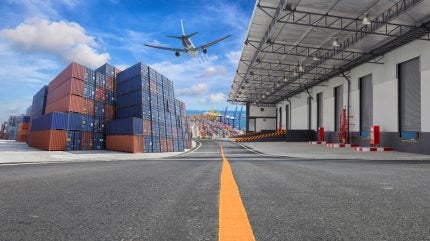
Efficiency and cost-effectiveness are critical considerations in packaging supply chains. Businesses are constantly seeking ways to reduce expenses while maintaining quality and sustainability.
Achieving this balance requires strategic decision-making, innovation, and collaboration across the supply chain. This article explores key approaches to cutting costs in packaging supply chains without compromising performance.
Optimising material usage
One of the most effective ways to reduce costs in packaging supply chains is to optimise material usage. Overuse of materials not only increases costs but also contributes to unnecessary waste.
By adopting lightweight materials, companies can achieve significant cost savings in both raw materials and transportation.
Advancements in packaging technology have enabled the production of thinner yet durable materials, reducing the amount required for each package. For example, flexible packaging solutions, such as pouches and shrink wraps, require fewer raw materials compared to traditional rigid packaging.
Furthermore, optimising packaging dimensions can help businesses minimise void space, reducing material waste and lowering shipping expenses.
Another approach is source reduction, which involves redesigning packaging to use fewer resources. Many brands are turning to minimalist packaging designs that eliminate unnecessary layers, adhesives, and embellishments.
Digital printing, which reduces the need for labels and excess packaging components, is also gaining popularity as a cost-saving measure.
Streamlining logistics and distribution
Logistics and distribution play a crucial role in packaging supply chain efficiency. Streamlining these processes can lead to substantial cost reductions while improving overall operational effectiveness. One key strategy is consolidating shipments to reduce transportation expenses.
By optimising load capacities and minimising empty space in shipping containers, companies can lower fuel costs and decrease carbon emissions.
Adopting just-in-time (JIT) inventory management is another way to cut costs. JIT ensures that materials and packaging components are delivered precisely when needed, reducing storage expenses and minimising waste from overstocking.
However, this approach requires robust supply chain coordination to avoid disruptions.
Automation and digitalisation have also transformed logistics operations, leading to enhanced efficiency and cost savings. Warehouse management systems (WMS) and artificial intelligence (AI)-driven analytics can optimise inventory levels, predict demand fluctuations, and prevent costly supply chain inefficiencies.
Real-time tracking and smart packaging technologies further enhance visibility, allowing businesses to reduce losses associated with misplaced or damaged goods.
Embracing sustainable solutions
Sustainability is no longer just an environmental concern; it is a key driver of cost reduction in packaging supply chains. Eco-friendly initiatives can lead to long-term savings by minimising waste, reducing energy consumption, and improving operational efficiency.
Switching to recyclable and biodegradable materials not only lowers waste disposal costs but also aligns with growing consumer demand for sustainable packaging. Companies that invest in circular economy practices, such as closed-loop recycling systems, can benefit from lower raw material expenses while enhancing brand reputation.
Energy-efficient manufacturing processes also contribute to cost reductions. Many businesses are investing in energy-efficient machinery and renewable energy sources to lower production expenses.
For instance, using solar or wind energy to power packaging facilities can significantly cut electricity costs over time.
Collaboration with suppliers and industry partners is another crucial aspect of sustainable cost reduction. Establishing supplier agreements for bulk purchasing, sharing transport networks, and participating in industry-wide recycling programmes can create cost efficiencies throughout the supply chain.
By prioritising sustainability alongside cost savings, businesses can future-proof their packaging operations while maintaining a competitive edge.
The takeaway
Cutting costs in packaging supply chains requires a multi-faceted approach that balances efficiency, sustainability, and innovation.
By optimising material usage, streamlining logistics, and embracing sustainable solutions, companies can achieve significant cost savings while maintaining high packaging standards.
As the industry evolves, businesses that proactively implement cost-reduction strategies will remain resilient and competitive in an ever-changing market.



